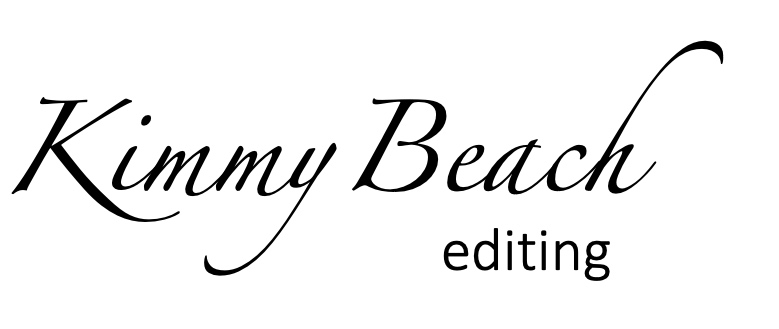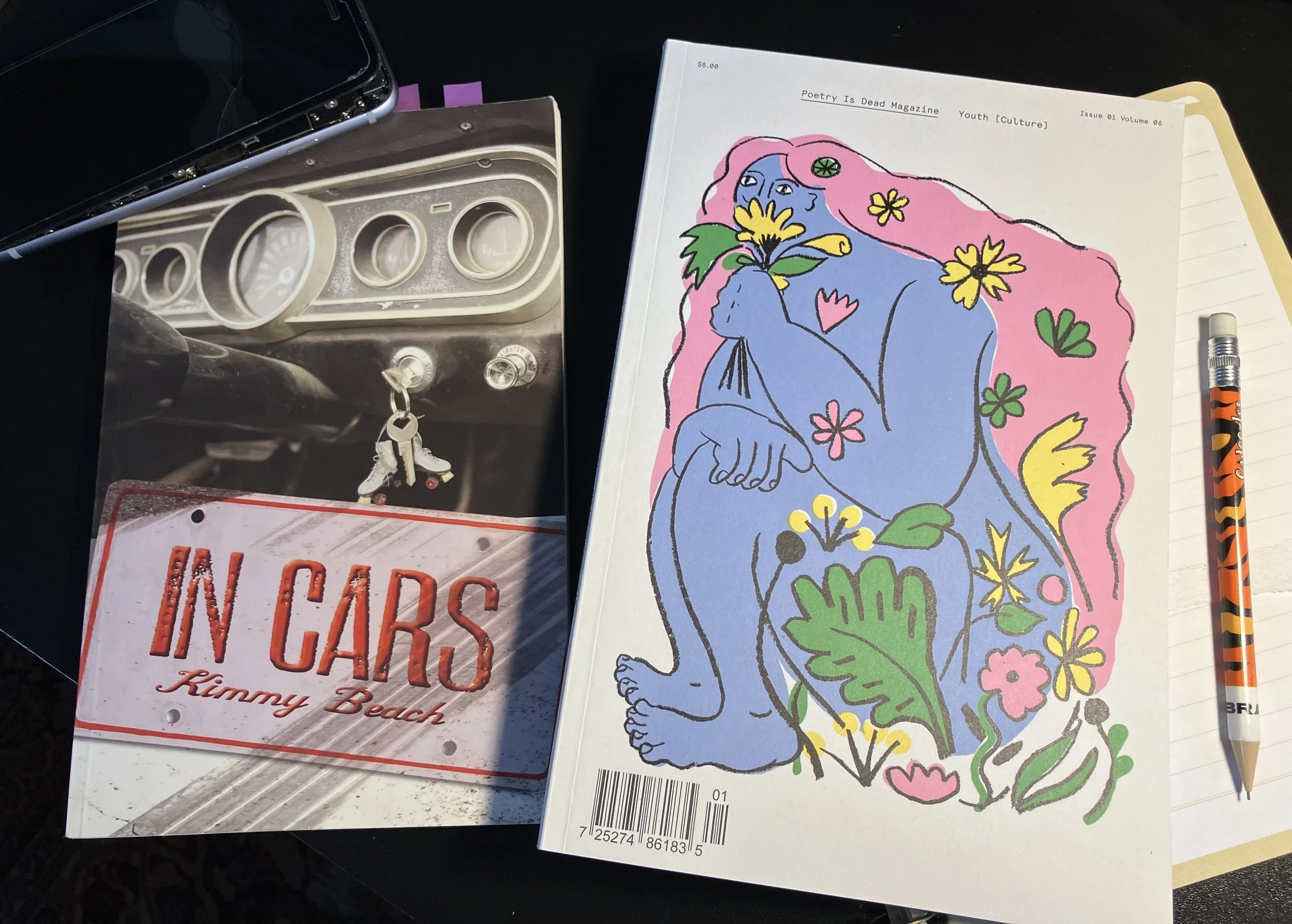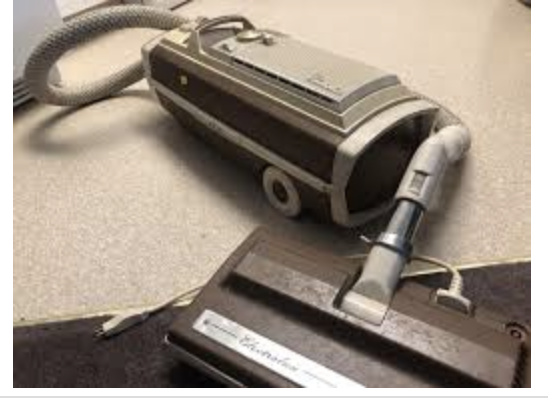Old and New (Stuff Galore!)
Good day, good readers!
I know I generally spend my time here talking about editing, but I’m going to veer off slightly for a while. It feels right.
Things do change, but I still like this blog format. The idea of Substack, etc would make me weep if I thought about it too much. I like the Substacks I read, but the idea of having to create content like that is a mental brick wall. So here I stay for now.
I’ve been talking here and there for a while about getting (mostly) out of editing, and into editing mentorship (you shall know all when I have it all worked out), and that big change is what prompted this post.
As I think about what changes have happened in the world and in my life these past few years (and the changes I want to make), I’ve started to go through stuff on both my physical shelves and my mind shelves to see what can go.
I’ve been excellent over the past four years about Swedish Death Cleaning the place, but there’s more to do. If you’re not familiar with Swedish Death Cleaning, it’s (in a nutshell) the process of getting rid of junk from your house so that if you kick it in a tragic blimp accident next week, your brother (or whoever) doesn’t have to go through that box of dusty 45s in the basement cupboard that used to be in the jukebox that’s still at mom’s, and which you know will sit there till you die unless you turf them.
See that lovely exploded old phone up there? Out the door! Yeah, who knew phones exploded in drawers years after you stopped using them? Not me! (YES, I’m going to recycle it properly NO I’m not going to throw it out YES I had a backup for it.) I have three dead laptops and a couple of iPads going into that pile as well. Swedish Death Recycling, here we come!
As I mentioned in an old post, I’m not much of a Marie Kondo fan in that I think that if something isn’t conventionally “joyful,” I can keep it anyway. For instance, my Dyson vacuum cleaner sparks immense amounts of joy in this gal’s heart. I can do the whole place top to bottom in seven minutes. For decades, this was my vacuum cleaner, inherited from my husband’s Aunt Fern when she died. I clunked this thing around my tiny house wrecking baseboards for at least twenty years until it finally told me it had had enough and unceremoniously DIED. I did not take this picture of it to commemorate its long faithful service. I found this photo online where people who apparently want to own one of these things can pay good money for it.
I say, whatever blows your hair back.
But as I work through all this, I come upon things that aren’t easy tosses: things I need to think about. I’ve kept a copy of every print journal I’ve ever been published in. They occupy a shelf under my Canadian poetry books and I’ve been randomly pulling them out, finding my pieces, and reading them. Some of them are going to go away forever, never to be seen by human or alien eyes again. Great fire starter for the backyard pit. (I’m not the author who’s going to leave all her shitty first drafts to some archive for a bunch of grubby-fingered first-years to flip through. I’ve been that grubby-fingered first-year. That’s a big no for me.)
I thought it might be fun to post some of that old writing here over the next while so that the physical copies can go to the great recycling centre in the sky (or whatever).
~~~
In 2014 or 2015, the radiant Cynara Geissler at Arsenal Pulp Press asked me to contribute to an issue of Poetry is Dead Magazine that she was editing. The theme was Youth [Culture], and she thought it would be fun if I cranked out an essay on the process of writing my fourth book, in Cars (Turnstone Press, 2007). The book is set in a roller rink and the back seats of several hot cars circa 1982. I was delighted to be asked, and unlike a lot of the old published stuff I’ve been reading through, this dang essay still stands up. So! In the interest of fun, I thought I’d publish it here lo these many years later.
This essay is unedited; there’s only one thing I’d change about it. In it, I say I plan to buy another Mustang before I kick it. (This is me with Jonathan, my 1974 Mach 1 5-speed I owned for a few years.) That was then. Instead, I bought a tricked-out Nissan Juke a few years back at half the price, named it Greased Lightning, and I bomb around happily in the old lady car that doesn’t look like an old lady car, and can blow away the young dudes in the brat-mobile at the light next to me ‘cause they never see it coming. My car’s got some get-up-and-go.
Me and Jonathan, circa 1983
So, as Polonius said to Claudius and Gertrude when he was about to read them Hamlet’s smut-filled (and private) letters to Ophelia, gather and surmise. (Or just have a little fun, hopefully.)
~~~
Pretty sure this is not my rink, but no matter. It looked exactly like this, blue floor and all. I found this photo at the Wheelies Facebook fan page. What you can’t see is Heartbreak Corner in the back, dark twist to the left. Many a tear was shed back there.
Wheelies is dead. Long live Wheelies. (Poetry is Dead Magazine, Issue 1, Volume 6)
When I was about 15, a roller rink opened in my town. That place became my home for years, and I stood in front of it and wept when it swapped owners about a decade later. I sat down right in the middle of the parking lot, looking through my tears at the new sign that said, Somebody and Somebody’s Boring Corporate Office, my youth ripped right out from under me.
Of course everyone says that about everything: I lost my youth that day. It’s a cliché, but it’s completely true. That blue rink had my scuffs, my sweat, my tears, and occasionally my blood all over it. I worked there for four years. I dry mopped that floor a dozen times a week, easy, and I certainly did more housekeeping there (my mom can confirm this) than I was ever willing to do in my own home.
~~~
In a very real way, Wheelies helped make me the person I am. Not only has it ensured that I will always have ridiculously strong calves, but it singlehandedly kept me out of trouble. I didn’t get into drugs or bush partying like a lot of my fellow students at Armpit Jr./Sr. High out in the sticks. I was too busy roller skating.
All of my boyfriends were rink rats. I never seriously went out with anyone who didn’t skate, and I wouldn’t go out with a guy who didn’t have his own skates. What a shitty little snob I was. Truly, though, outside the rink, I was a mess. I was shy and though I did okay in school, I didn’t give a continental crap for any of it but English class. The rink was the only place I was truly me.
~~~
I had a 1974 Mustang for a while until I exploded it when I was 21. Family sedans from that point on, but one of these effing years, I’m buying another Mustang. I’m going to be the little old lady in the muscle car. Laugh all you want, young punks! I own THIS car and you’re driving your dad’s hand-me-down shit wagon. Welcome to life, you little pukes.
Occasionally, I turn into Mrs. These-Kids-Today but mostly I try not to. I remember what it’s like to be a teenager. I remember the garbage that was never quite negated by the good stuff. I remember being criminally self-absorbed and awful.
The key to remembering a lot of this stuff was writing it. When I was 16, one of the roller kids was killed by a drunk driver. We were friendly, and he had asked me out for coffee. We never got to have that date. I’ve thought a lot about Darren since then, and he crosses my mind every time I drive through the intersection where he was killed so many years ago.
About a decade ago, I was telling a friend about my late Mustang and it led me to write about the night Darren was killed in his tricked-out sex mobile. I hadn’t heard “Radar Love” in at least ten years. I bought that song and I played it over and over while I wrote. It was the soundtrack of the speed-skating contests that took place at Wheelies on Saturday nights.
That song led to others: “Ballroom Blitz,” “That’s the Way (I Like It),” “Heart of Glass,” and a couple dozen more tunes that took me directly back to the rink. I made a playlist and I wrote like the wind. I turned Darren into Joseph (his middle name) and away I went.
~~~
When my little brother had a milestone birthday a few years after I started writing the book, his wife arranged for all of us to go roller skating at a crappy rink that had just opened across town. My skates still fit but the boots were brittle. Didn’t matter. We were never so sore as we were the next morning (where did that muscle come from?), but holy hell it was fun, all of us looking out the bottoms of our progressive lenses, trying not to trip over the kids on their in-lines. I have no idea why 12-year-olds in this day and age know the words to “Billie Jean,” but they do, and they can sing along, skate, and text all at the same time.
From that point on, I began to write in Cars with purpose and it came out shortly afterward. I had found a way to write about the rink and its place in my life, and I think the book works well as an extended metaphor about the insular nature of the teenage brain. It's purposely claustrophobic in that almost nothing takes place outside a car or outside the rink. No one ever buys gas or goes to work (except at the rink), so essentially it's a false, exaggerated world that hopefully mirrors what goes on inside teenage heads. It’s poetry, but I think there might be a novel in me about it one day. in Cars was published in 2007 and all but disappeared. The book (unlike my Mustang) did not blow up in Canada, but I'm still the only author I know who wore roller skates to launch a book.
Everything is a learning experience in this ridiculous writing life we’ve chosen. I still like that book a lot, and it was the right genre at the time for the story I needed to tell. Back then, I didn't realize I was allowed to write anything but poetry, as that's how I'd always been categorized, and to a large extent, that's how I saw myself. I know better now.
~~~
What I know for sure is that there’s no such thing as the past we couldn’t have. I call bullshit when writers say, “How I wish I’d done X differently…” I say that if your past didn’t happen the way you wanted it to, rewrite it so it did. I became so involved with my characters, that I started to believe I actually did fuck Darren in the back of my Mustang every night, rather than being the virgin I was till years later.
And what did it was the music. When I listen to K.C. and the Sunshine Band, I am immediately 17 years old and on roller skates. I won’t say writing is easy (Lord!), but I will say that in Cars came to me relatively easily because I was listening to the right music.
I spoke to a grad seminar some years back about my process in writing the book. Until this article, they're really the only people who've got the true story. One of the students asked me why—poetically—I had done a certain thing, and what—imagistically and metaphorically—my motivations were. I said that the galleys were due at the press the next week, though I like it a good deal now I hated that book right then (as I usually do at the galleys stage), I wanted to watch The Young and The Restless, and it was wine o'clock. So I threw in three lazy lines that cleared up the unresolved whatever-it-was so I could be done with the goddamn thing. Her jaw dropped. Sometimes, it's just that banal.
I didn’t find that book harrowing to write. The car accident poems were written in a logical fashion: what body part would splat where depending on what part of the car it hit. I drew pictures of a car hitting a teenage boy, and spent hours imagining how he would fly through the air. I’ve lied to nearly everyone about my process in writing this book. I must have had some idea that if I didn't tell people I was suffering, they would think I wasn't Making Art™. Now I know that's bullshit, and I also no longer care what people think. I've said that it was terribly difficult to channel my teenage self and write the oh-so-sad death scenes. The truth is: it wasn’t. It was easy.
I can admit that now. I’m an old lady. No one is going to fire me.




